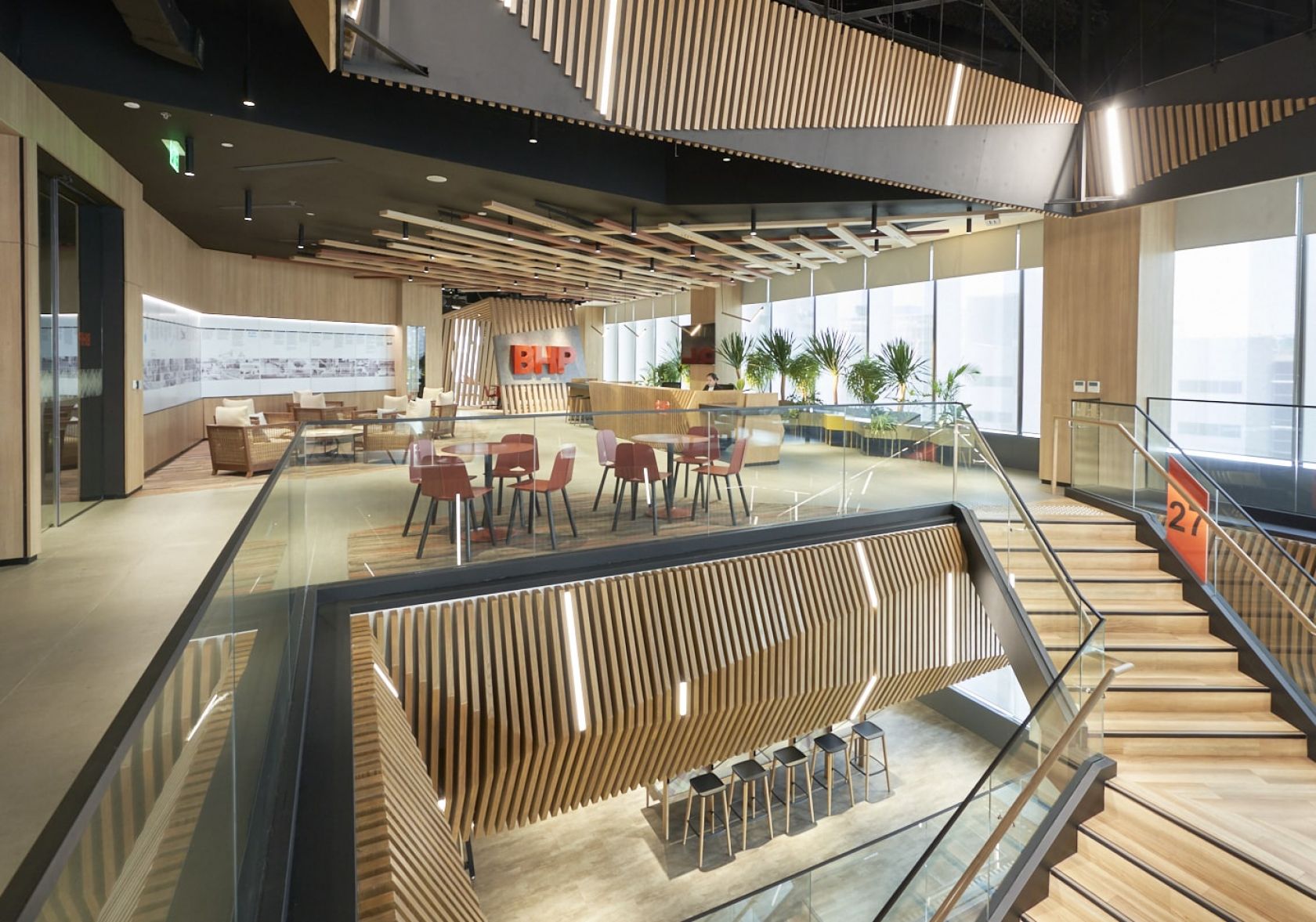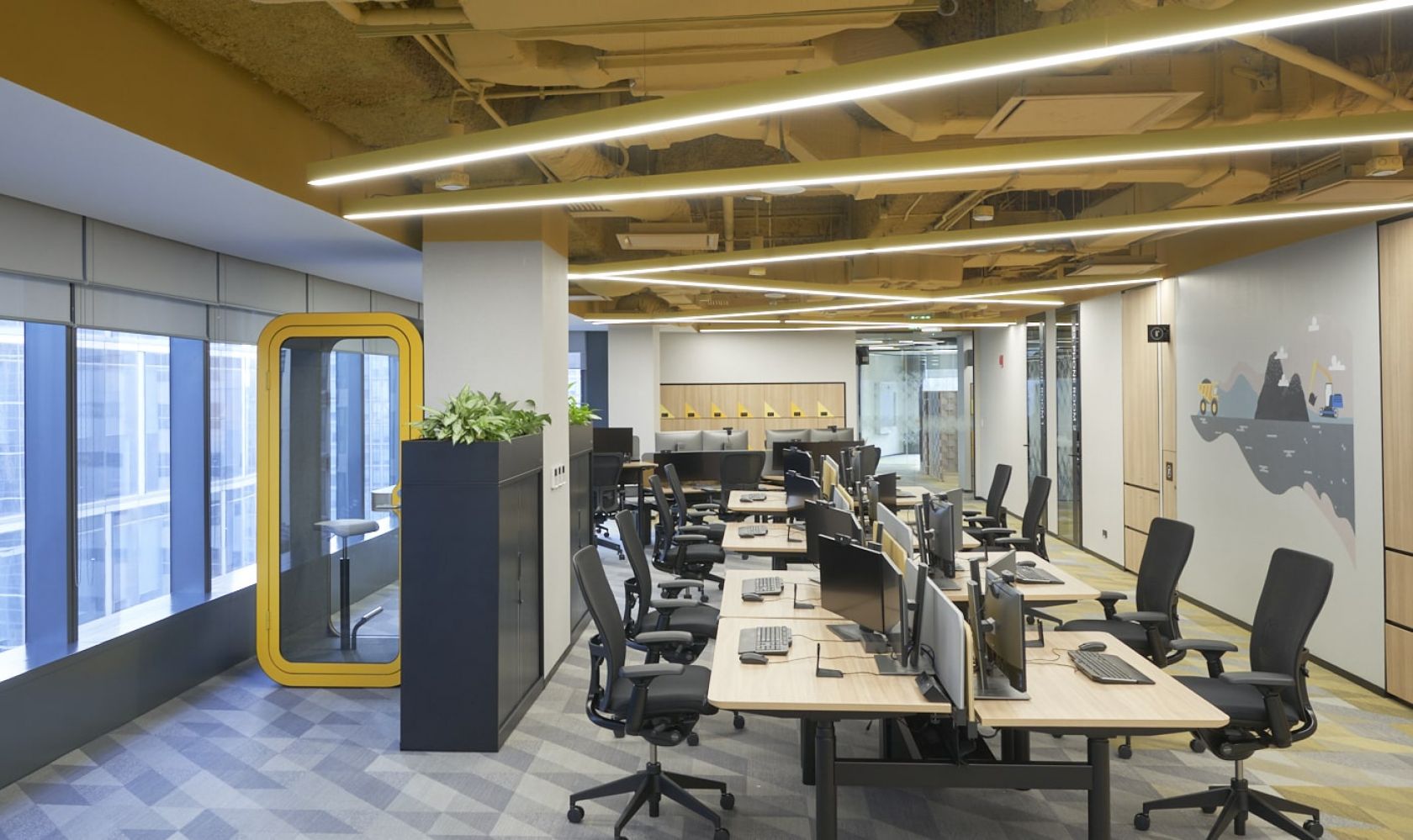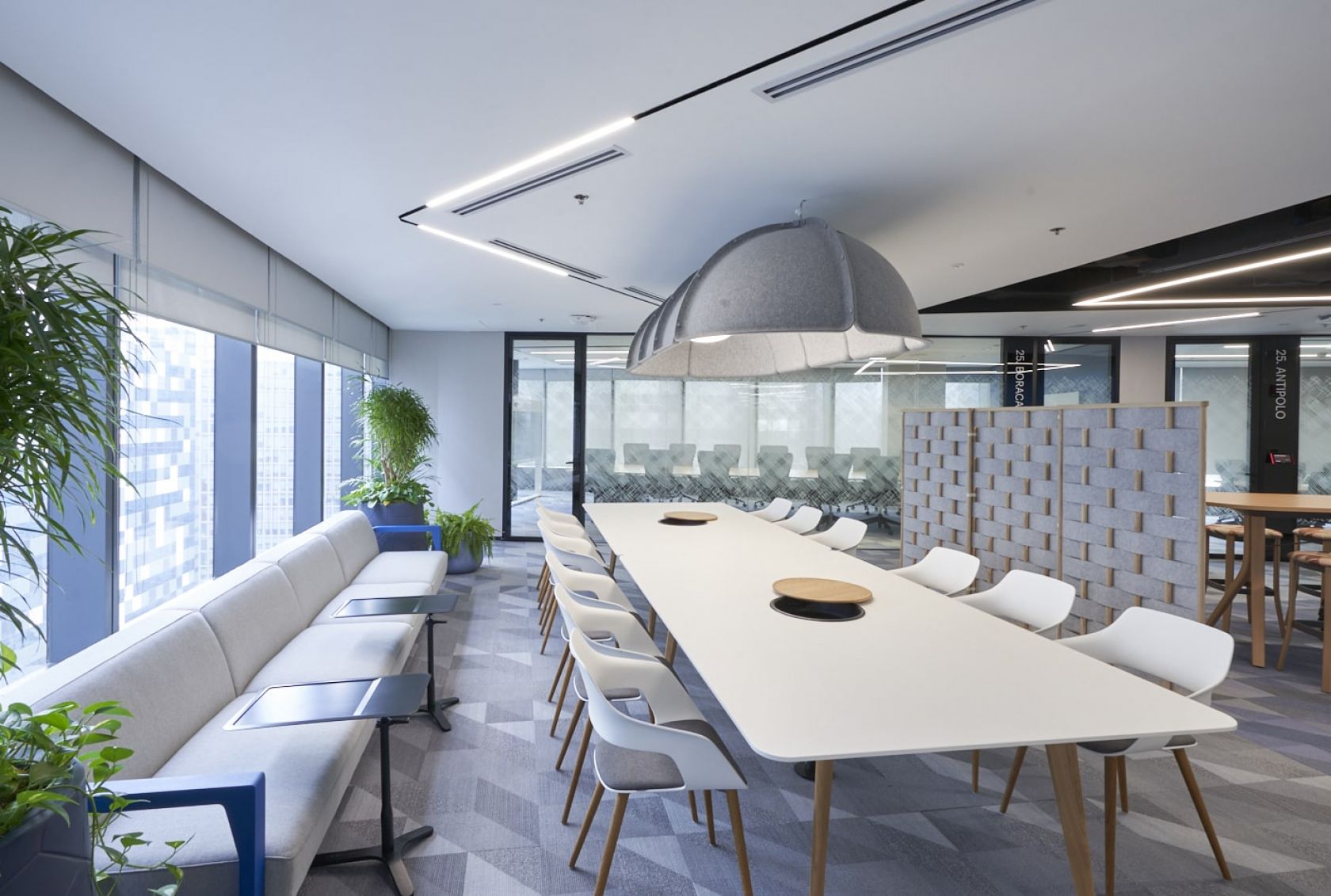According to the people who work there, BHP's Manila office is one of the best in the world. Leesman, a global firm that rates the quality and efficacy of workplaces on a scale known as the Leesman Index, gave it a rating of 89.6 out of 100 — the highest Leesman Plus score yet achieved. The record was set in 2019 and remains now, even after COVID-19.
The office is based at the ArthaLand Century Pacific Tower in the heart of the capital. Called "truly exceptional" by Leesman, the five-floor office space is lauded by its occupants, thanks primarily to workspace variety. The most telling statistic? 98% of employee respondents said that the workplace enables them to work productively.

Let's take a look at the composition of this office, and how landlords might emulate the design and usability to achieve similar rates of satisfaction.
Furniture and fit-out
Functional and aesthetic cohesiveness'
BHP partnered with Australian furniture designer Schiavello to create a workplace that 'exceeded industry standards in agility, flexibility, health and wellbeing". They did this with Krossi workstations — sleek electric standing desks known for their superior ergonomics — as well as with Vecos Smart Lockers. (Side note: off-the-shelf Equiem tech enables landlords to offer a smart locker solution just like that of Vecos. Instant booking and instant access to secure lockers, all via our tenant experience app).
One of the key differentiators in approach is the unification of architectural foundation and furnishings. The BHP team did not simply lease an office and fill it with expensive, high-tech furniture; visions for design and equipment were formed at the same time, ensuring they informed and respected one another. This, according to Schiavello, is how you get the all-important sense of cohesion.
Sustainability is another key factor in the success of the BHP Manila office. BHP asked Schiavello to, where possible, refurbish and reuse existing products used in other offices and locations around the world.
Of course, completely redesigning and refitting a space is beyond scope for many commercial landlords. But the overarching idea is mindfulness: Let's change the way we think about our floorplan, about where we put this desk, or this meeting room, or the kitchen. Incoming tenants, keen as they are about smart and sustainable spaces, will likely have their own ideas.
Activity-based working" is critical
The Manila office was designed by Woods Bagot to offer "agility and empowerment" to the staff. Said Woods Bagot associate Daniel Du, "the key to a dynamic workplace is being able to decide how they would like to work". As you can see from this snap (courtesy of Schiavello), main working areas are set up to be diverse and open. You have desk clusters, bathrooms, meeting rooms, and space-efficient privacy booths all within steps of each other.

Injecting culture
A "design narrative" may sound fanciful and expensive, but that is exactly what BHP Manila opted for when fitting out its index-topping space. In this case, the narrative centred on Filipino culture. "[Our design] speaks to the fun, happy and cheerful nature of the Philippines," said Du, ‚"and the rich diversity of a multi-cultural melting pot of Singapore."
The response from employees was overwhelmingly positive. Theirs is not a mere office, but an artwork bearing a deep and relevant statement of life in their city and country. This kind of next-level thinking may not be required for the majority of office spaces, but it does offer a prime example of what an office can be. And it's important to note that the world's best hotels have been thinking in these terms for decades.

The ratings, broken down
Here's what is at stake when we talk about the best-rated buildings in the world: Top reported rates of productivity, pride, and sense-of-community. These factors, when present, make the workplace more valuable to a greater proportion of individuals, on average. The home office cannot compare.
87% of employees in Leesman Plus workplaces report high levels of productivity, compared with a 64.2% average across global workplaces. 92.7% of Leesman Plus workplaces stoke pride in those who work there; similarly, 86.2% of Leesman Plus workplaces inspire a sense of community.



